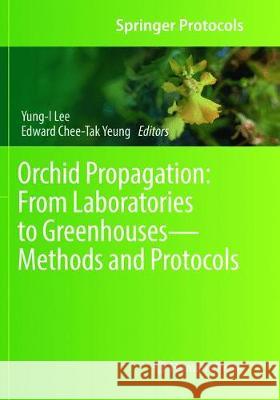Orchid Propagation: From Laboratories to Greenhouses--Methods and Protocols » książka
topmenu
Orchid Propagation: From Laboratories to Greenhouses--Methods and Protocols
ISBN-13: 9781493992805 / Angielski / Miękka / 2019 / 524 str.
Orchid Propagation: From Laboratories to Greenhouses--Methods and Protocols
ISBN-13: 9781493992805 / Angielski / Miękka / 2019 / 524 str.
cena 1008,75 zł
(netto: 960,71 VAT: 5%)
Najniższa cena z 30 dni: 963,86 zł
(netto: 960,71 VAT: 5%)
Najniższa cena z 30 dni: 963,86 zł
Termin realizacji zamówienia:
ok. 22 dni roboczych
Bez gwarancji dostawy przed świętami
ok. 22 dni roboczych
Bez gwarancji dostawy przed świętami
Darmowa dostawa!
Kategorie:
Wydawca:
Humana Press
Seria wydawnicza:
Język:
Angielski
ISBN-13:
9781493992805
Rok wydania:
2019
Dostępne języki:
Numer serii:
000389047
Ilość stron:
524
Oprawa:
Miękka











